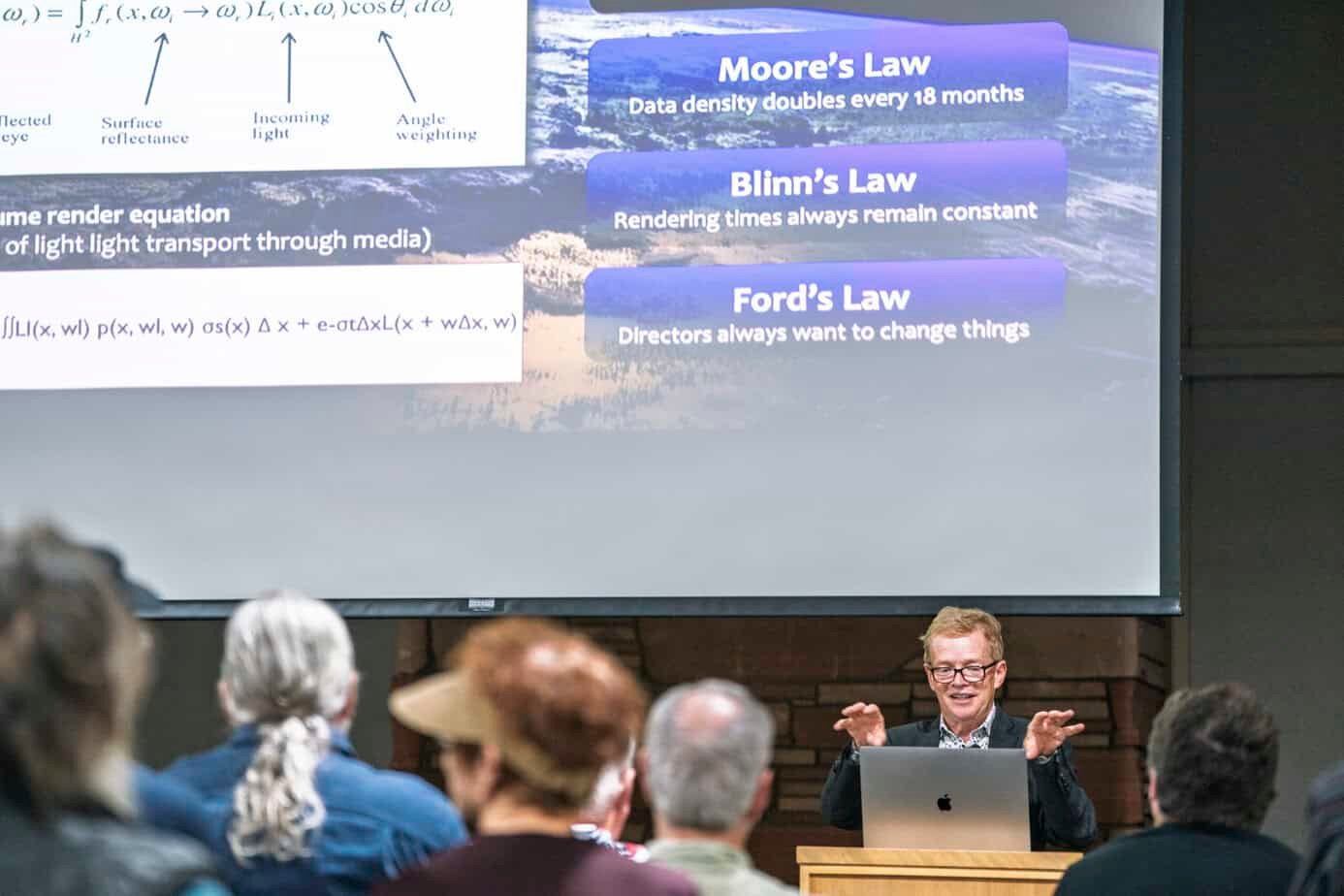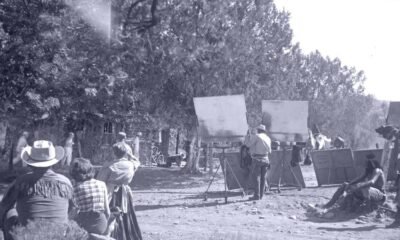Business
Chris Ford’s Journey Through the Cosmos: Unveiling Sci-Fi Marvels

The Sirius Lookers Astronomy Club recently held an enlightening presentation featuring Chris Ford, a former business director at Pixar and current CEO of the Astronomical Society of the Pacific, at the Sedona Public Library on April 16.
Ford addressed the intricate relationships between real astronomy and the visual storytelling found in Hollywood. He emphasized that cinematic effects often have a basis in scientific principles, stating, “The visual demands of scientific communication and cinematic storytelling became completely intertwined.”
During his talk, Ford showcased a groundbreaking 1979 film by NASA’s Jet Propulsion Laboratory, which he described as “one of the most important and consequential short films ever produced.” The Voyager animations, designed to visualize the spacecraft’s encounters with Jupiter and Saturn, were pivotal in the evolution of computer-generated imagery (CGI) in cinema.
Before the Voyager animations, audiences were primarily exposed to simplistic CGI, such as the wireframe graphics in “Star Wars: A New Hope.” Ford pointed out that the techniques utilized in the 1979 JPL film would later set the stage for common filming practices, such as camera tracking through Saturn’s rings, a vision later realized in the “Star Trek” franchise.
Ford noted that the advancements in CGI have followed a logarithmic S-curve pattern, beginning in the 1970s and advancing toward AI-driven visualizations in the 2020s. He likened this progression to aviation, where early advancements swiftly transitioned to supersonic aircraft, which ultimately slowed due to economic constraints.
“Technology generally starts off slowly, gaining momentum until it reaches physical and economic limits,” Ford explained. This pattern mirrors the evolution of photorealistic simulation and visualization.
As he discussed the future of CGI, Ford emphasized that while today’s technology may not resemble 23rd-century advances, the immersive experiences available to the public are rapidly coming into focus. He championed the democratization of astronomy, stating, “We don’t have to be astronauts to experience what spacecraft and space missions look like.”
The Sirius Lookers Astronomy Club convenes on the third Wednesday of each month at 5 p.m. at the Community Library in Sedona. The club has also scheduled a Community Astronomy Night on May 21 from 8 to 9 p.m., allowing attendees to observe celestial wonders like distant galaxies and Mars through telescopes.


















